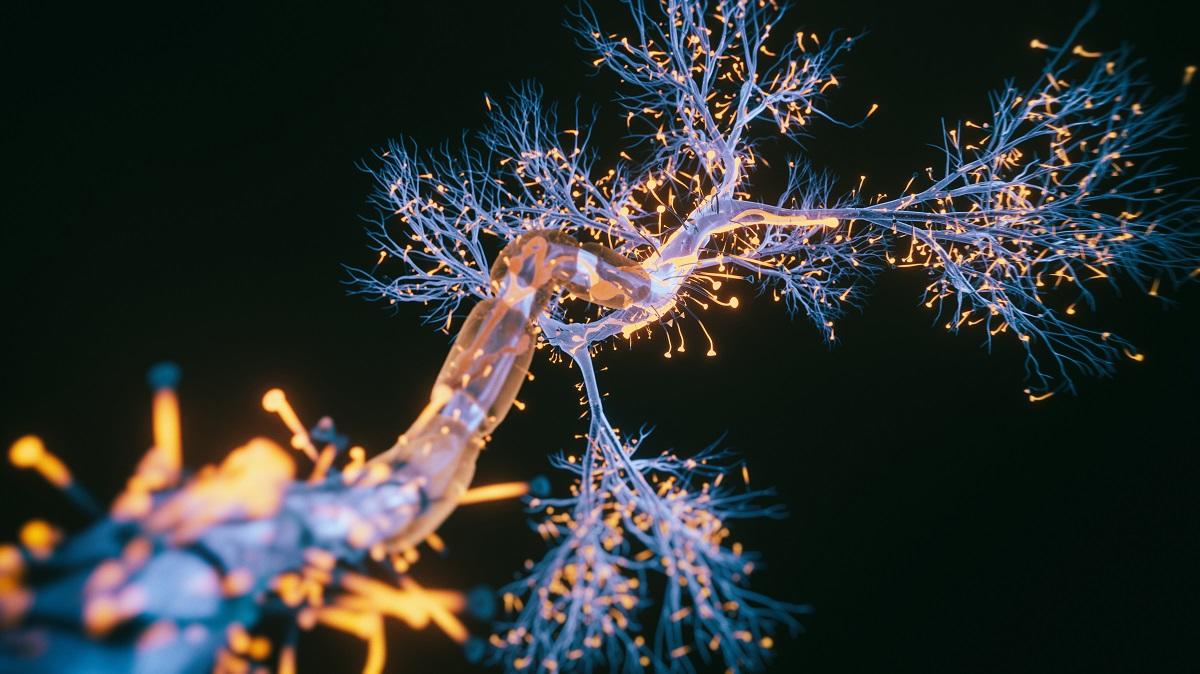The inner workings of the human brain are a gradually unraveling mystery. The enigmatic organ in our skulls is a dizzyingly complex assembly of intercommunicating neurons – hosting as many of these cells as the roughly 100 billion stars that can be counted in the Milky Way galaxy – and its “input-output” function is only partially understood.
How do individual neurons receive data and then convert that information into an output across the brain’s intricate wiring map? How does activity in these cells’ antenna-like dendrites change a neuron’s function? And what does this mean for our big picture understanding of how the brain operates?
Now, Dr. Richard Naud at the University of Ottawa Faculty of Medicine has led a highly compelling new study that brings us closer to answering these big questions.
The study’s results have important implications for theories of learning and working memory. They could also potentially help lead to future developments in artificial intelligence (AI) since AI developers and programmers watch the work of Dr. Naud and other leading neuroscientists.
Published inNature Computational Science, the study tackles the many-layered mystery of the “response variability” of neurons, brain cells that use electric signals and chemicals to process information and greenlights all the remarkable aspects of human consciousness.
The findings unveil the nuts and bolts of how neuronal variability is controlled by dendrites, the antenna that reach out from each neuron to receive synaptic inputs in our own personal neural communication networks.

“This study establishes more precisely how single neurons can have this crucial property of controlling response variability with their inputs.”
Dr. Richard Naud
— Associate Professor Faculty of Medicine’s Department of Cellular and Molecular Medicine
Essentially, the rigorous study’s results establish that properties of dendrites potently control output variability, a property that’s been shown to control synaptic plasticity in the brain.
“The intensity of a neuron’s response is controlled by inputs to its core, but the variability of a neuron’s response is controlled by the inputs to its little antennas – the dendrites,” says Dr. Naud, an Associate Professor at the Faculty of Medicine’s Department of Cellular and Molecular Medicine and the uOttawa Department of Physics. “This study establishes more precisely how single neurons can have this crucial property of controlling response variability with their inputs.”
The study began with an intuition. Dr. Naud suspected that if a mathematical framework he’d used to describe the cell body of neurons was extended to take their dendrites into account, then they might have luck efficiently simulating networks of neurons with active dendrites.
He enlisted the help of Zachary Friedenberger, a PhD student at the Department of Physics and a member of Dr. Naud’s lab. Dr. Naud believed Friedenberger’s skillset and background in theoretical physics was custom-made for some of the challenges of the work. “He managed to solve the math in a record time and solved a number of theoretical challenges I had not foreseen,” Dr. Naud says.
Dr. Naud believed that their technique could provide insight on the neuronal response to variable inputs. So they began working on a technique that would be able to compute statistics from a neuronal model with an active dendrite.
Fast forward to the completed study: The predictions of the model were validated by analysis of in vivo recording data and observed over a wide range of model parameters.
One of the work’s reviewers noted that the theoretical analysis “provides key insight into biological computation and will be of interest to a broad audience of computational and experimental neuroscientists.”
What are next steps for the uOttawa researchers as they explore questions suggested by this innovative work?
“To solve the math, we had to make a number of assumptions. A logical follow up would be to try solving the math without these assumptions,” Dr. Naud says. “In particular, we can only solve the case of a single dendrite. What happens with multiple dendrites is unclear in this perspective.”
Media requests: [email protected]
Support the Faculty of Medicine today! Use the “Other designation” field on our online donation form and indicate your support towards the 'Medical Artificial Intelligence Fund'.
